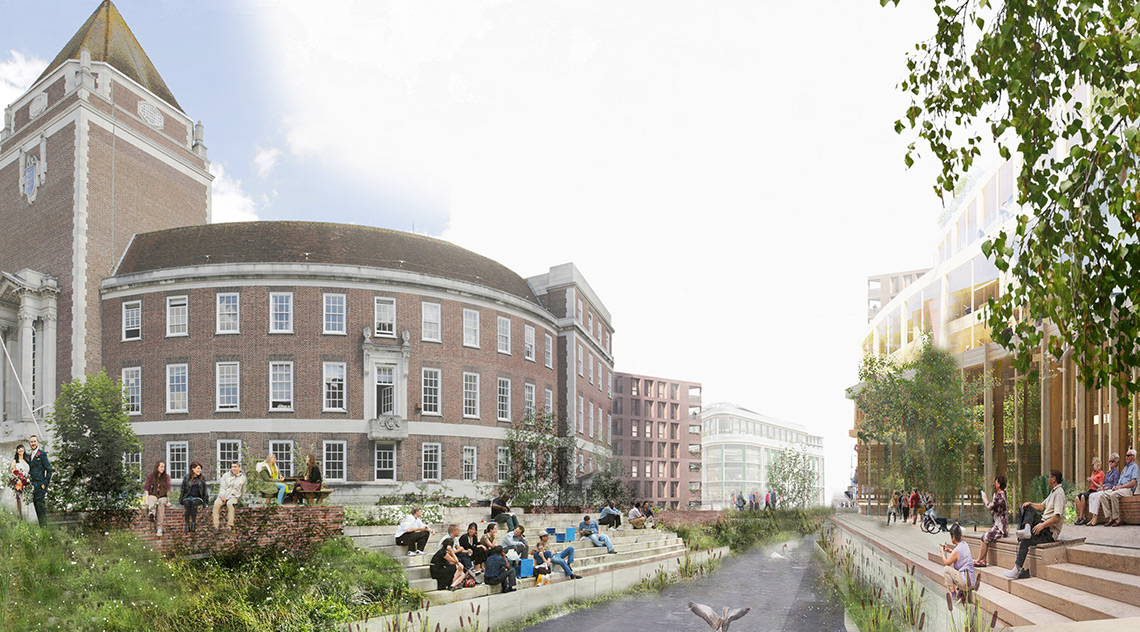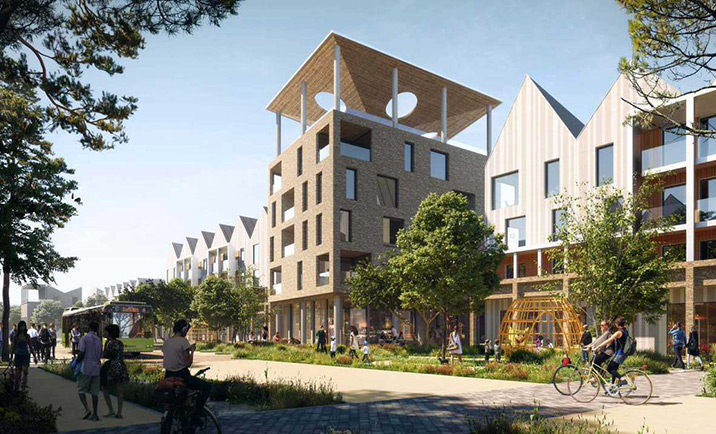Public sector ownership and repurposing
WHAT ROLE DO LOCAL AUTHORITIES HAVE IN REPURPOSING TOWN CENTRE ASSETS?
A proactive stakeholder
The public sector traditionally has played a significant role in both delivering and re-purposing town centres. Recently, the focus of re-purposing town centres has been a key focus in the public sector agenda, with additional funding being made available through programmes such as the Future High Streets Fund and the Town Fund for example.
However, notwithstanding the provision of funding, the public sector involvement in changing town centres takes various forms, from town centre management, planning and policy, delivery of infrastructure, asset management and driving regeneration and re-purposing through redevelopment / re-provision of their Civic Centre or facilities as a catalyst or pioneering occupier.
For example, Brent Council delivered Brent Civic Centre as a part of the Wembley Park regeneration area, focussing on consolidation of civic facilities and provision of multi-use space. In London Borough of Lambeth, Your New Town Hall was delivered as part of a regeneration scheme in Brixton.
These projects created operational efficiencies for the public sector but also act as footfall generators for surrounding uses.
In the last five years, local authorities have invested almost £1bn in shopping centre assets across the UK with plans to have more control over the management and development of town centre assets in order to ensure their future sustainability. However, conversely, local authorities who are already some of the largest owners of town centres are considering space rationalisation of public sector assets at a time when retail uses are going through structural change.
However, in the post Covid-19 environment and changing retail and town centre landscape, rightsizing is going to become more of an issue. It is fairly well accepted that retail in town centres is going to be impacted, with a reduction in provision to meet the trends in this sector. However, the public sector’s role in town centres will also need to take rightsizing into consideration, with the ability to deliver larger scale assets potentially being impacted by changing work patterns.
This increases the problem, but also the opportunity; many of these sites are large and with repurposing potential. Essentially to ensure the future of our town centres the problem doesn’t lie with retail space alone, it is a question of rightsizing everything.
More or less
In south west London, Kingston Council are developing an ambitious town centre vision to support the long terms needs of the borough’s residents, businesses and visitors in years to come. Their Town Centre Development and Renewal Programme is at the heart of realising this vision. It is also at the heart of placing the council on a path to financial self-sufficiency by enabling it to invest in vital public services. This includes how council-owned assets, including the Guildhall council office complex, can be repurposed to create work spaces, homes, and public spaces for the benefit of everyone in the community.
Just down the road in Sutton the local authority is taking forward an ambitious programme to right-size and repurpose areas of the town centre. This includes acquiring retail assets and regenerating housing estates on the fringe of the town centre. Savills is working with Kingston, Sutton and a number of other London local authorities, providing a range of advice including retail consultancy, residential consultancy, planning, viability and delivery advice.
Current conditions are driving some areas of the public sector to occupy more accommodation in town centres, with a key example being the NHS where primary care facilities are considered as part of repurposing space in shopping centres for example, driving footfall and value through covenant strength. The public sector’s requirement for town centre assets therefore may change but it is clear that adapting a more flexible approach in relation to policy and management will be important in ensuring that town centres can function as effective places. The greater flexibility afforded by the latest Town and Country Planning (Use Classes) (Amendment) (England) Regulations 2020 will assist with this and enforce the potential for “right sizing” not only retail, but also other commercial town centre uses.





